The Shrine of Our Lady of the Rosary of Namyang
Project Case Study
The Shrine of Our Lady of the Rosary of Namyang [남양성모성지], also known as ‘Rosary Hill’, is considered a site of Catholic martyrdom, memorializing the Great Byungin Persecution of 1866. To memorialize their martyrdom as proof of their faith, Namyang was designated as a Holy Site on October 7, 1991. This cathedral, built in hopes of inter-Korean unification and peace, was designed by world-renowned architect Mario Botta. South Korea's leading lighting design practice Bitzro & partners were commissioned with lighting design of the cathedral.
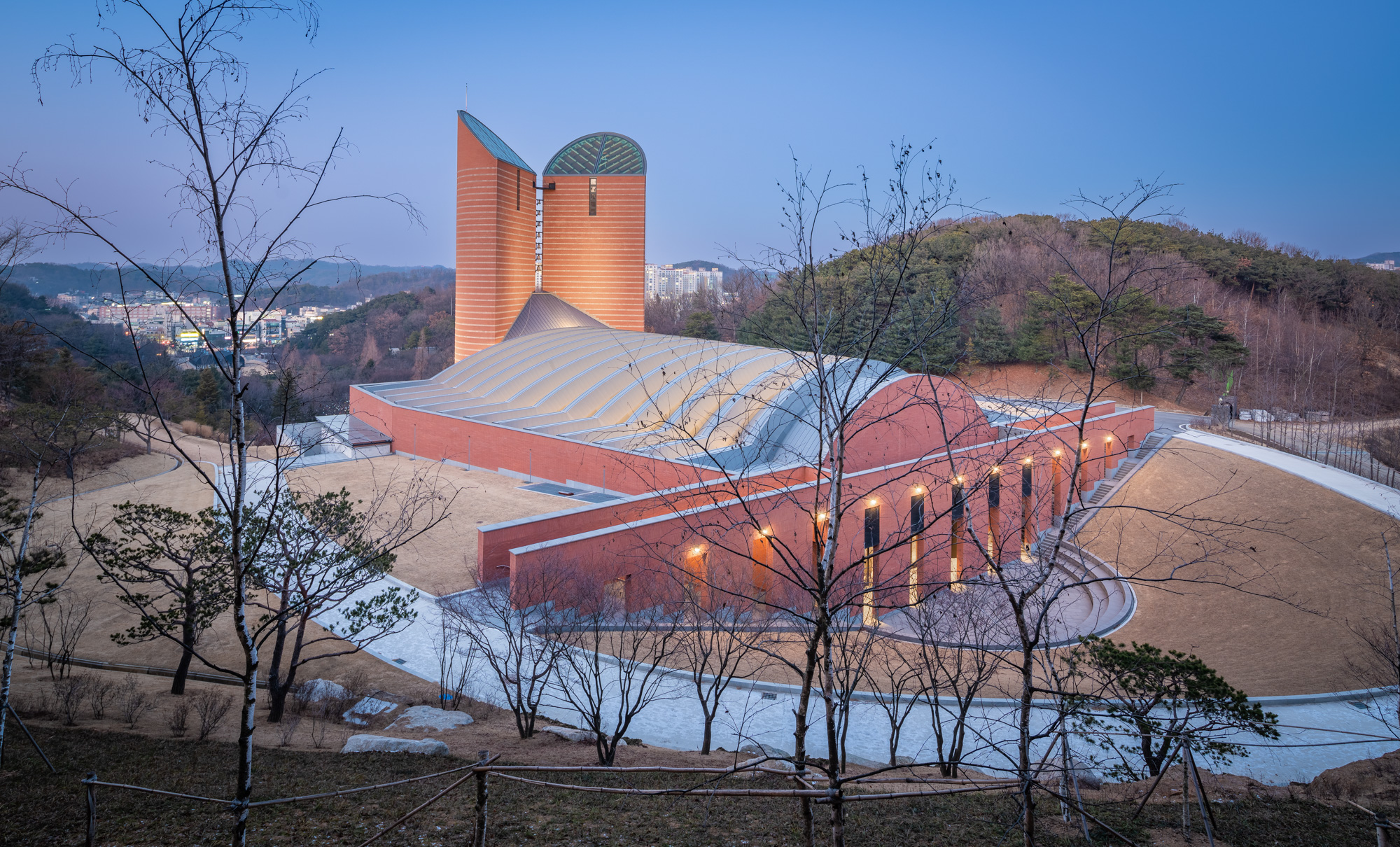
In a vast green hilly area south of the city, the cathedral is built in a small valley between the hills, incorporating it as part of the site. The presence of the cross is deliberately kept low-key, engraved only at the top of the tower. The building intention of the cathedral is not just for Catholic mass and believers, but to act as a community park for the residents. It aims to revive the tradition of ancient Basilica, a large public building with multiple functions and a place for public assembly. On weekends, you can see families having picnics at the surrounding park.
As visitors are led up the hill, they are greeted by two brick-cladded towers. Lit up by LIGHTSCAN, the towers reach up to the skies like a beacon for hope and peace.
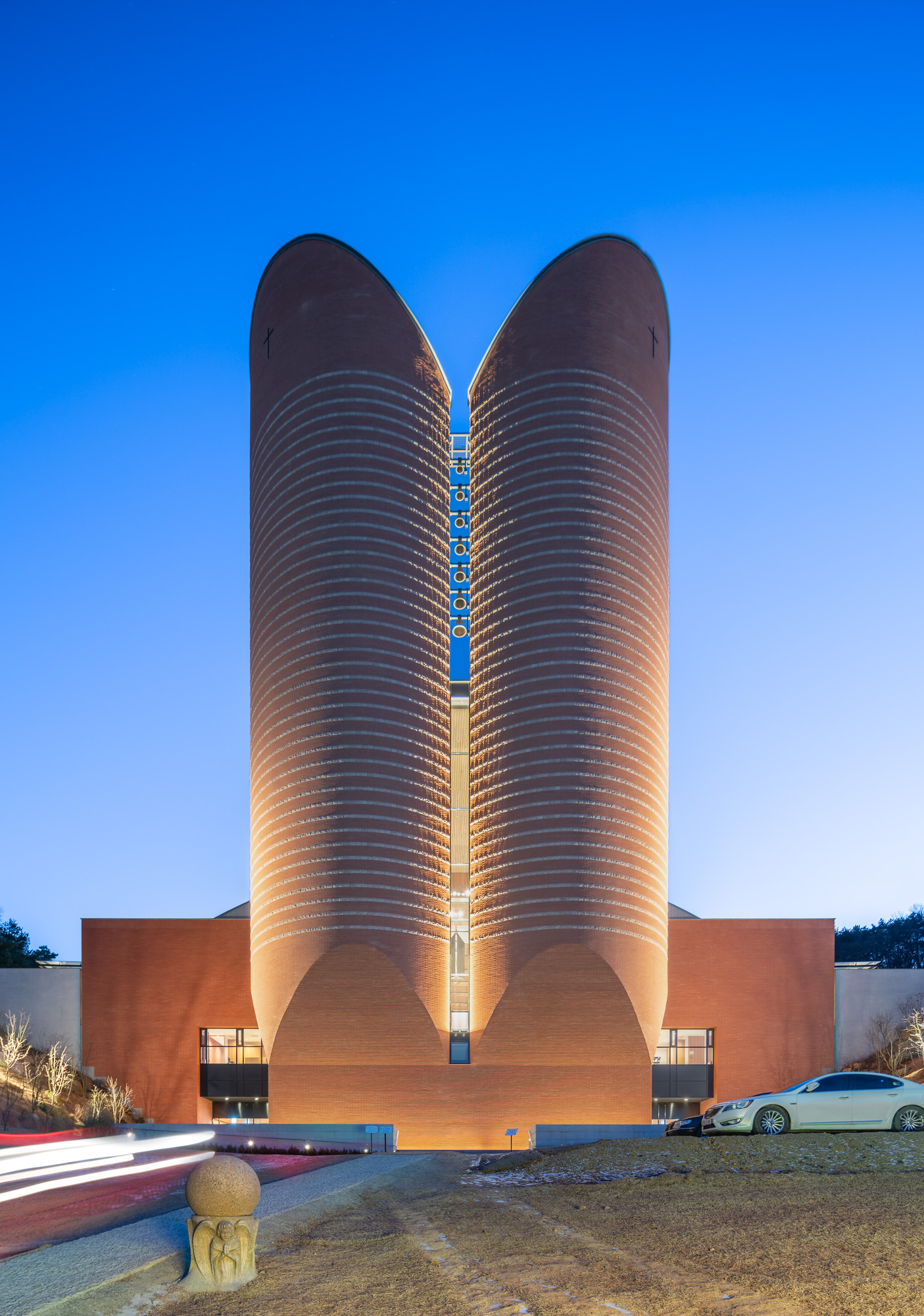
To enter the cathedral, visitors are brought up close to the towers, entering from the two large entrances on the side of the towers. Walking through a corridor of concrete and brick cladded wall, the area is lit up by Quintessence with wallwasher lenses. Vertical illuminance in form of wallwashing can light up a space with lesser light fixtures while creating sufficient ambient lighting for wayfinding. Using lesser light fixtures also reduces the purchasing and operational cost, creating a more energy efficient system in the long run. It can also define and enhance the architectural elements of the space.
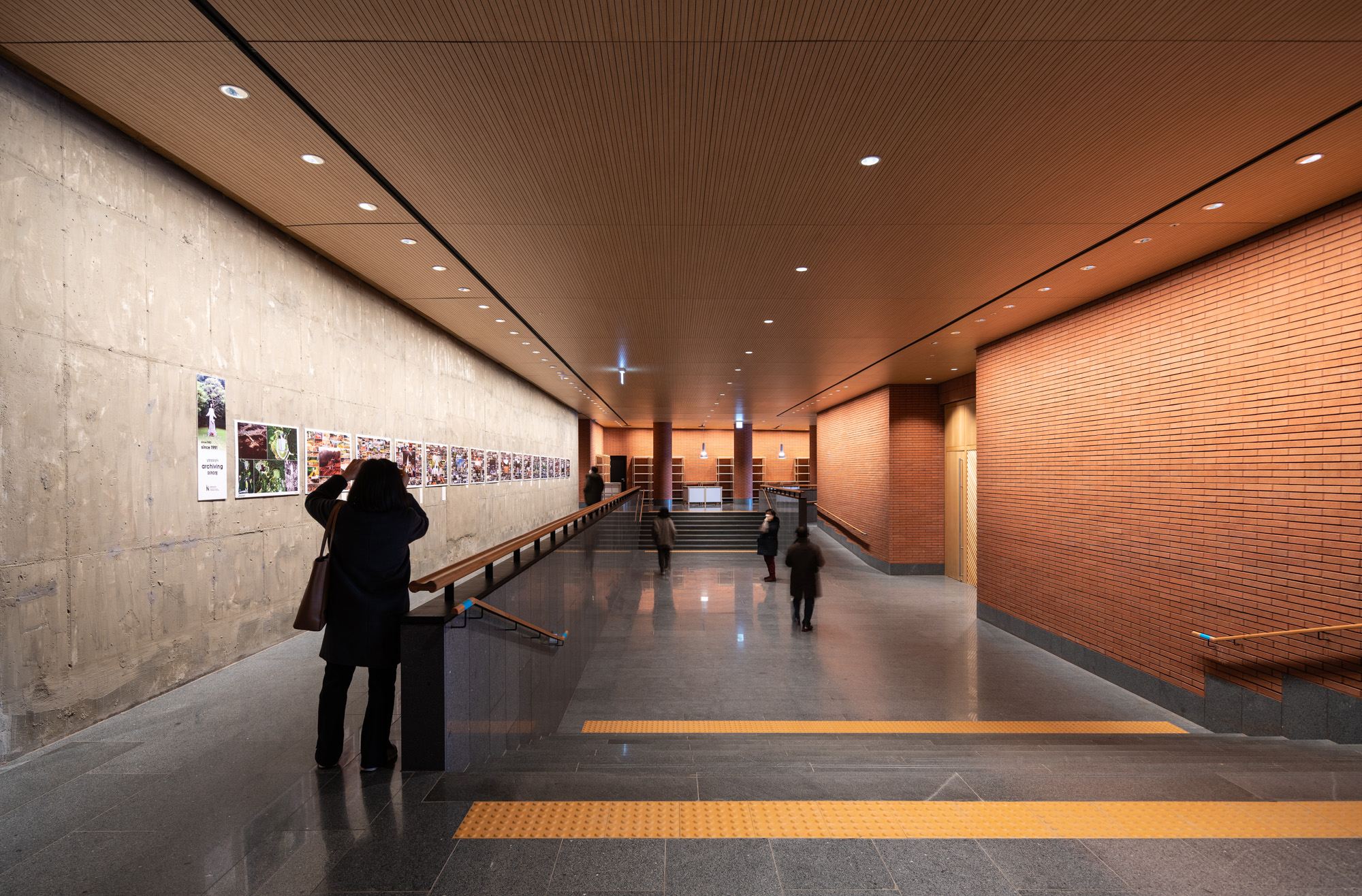
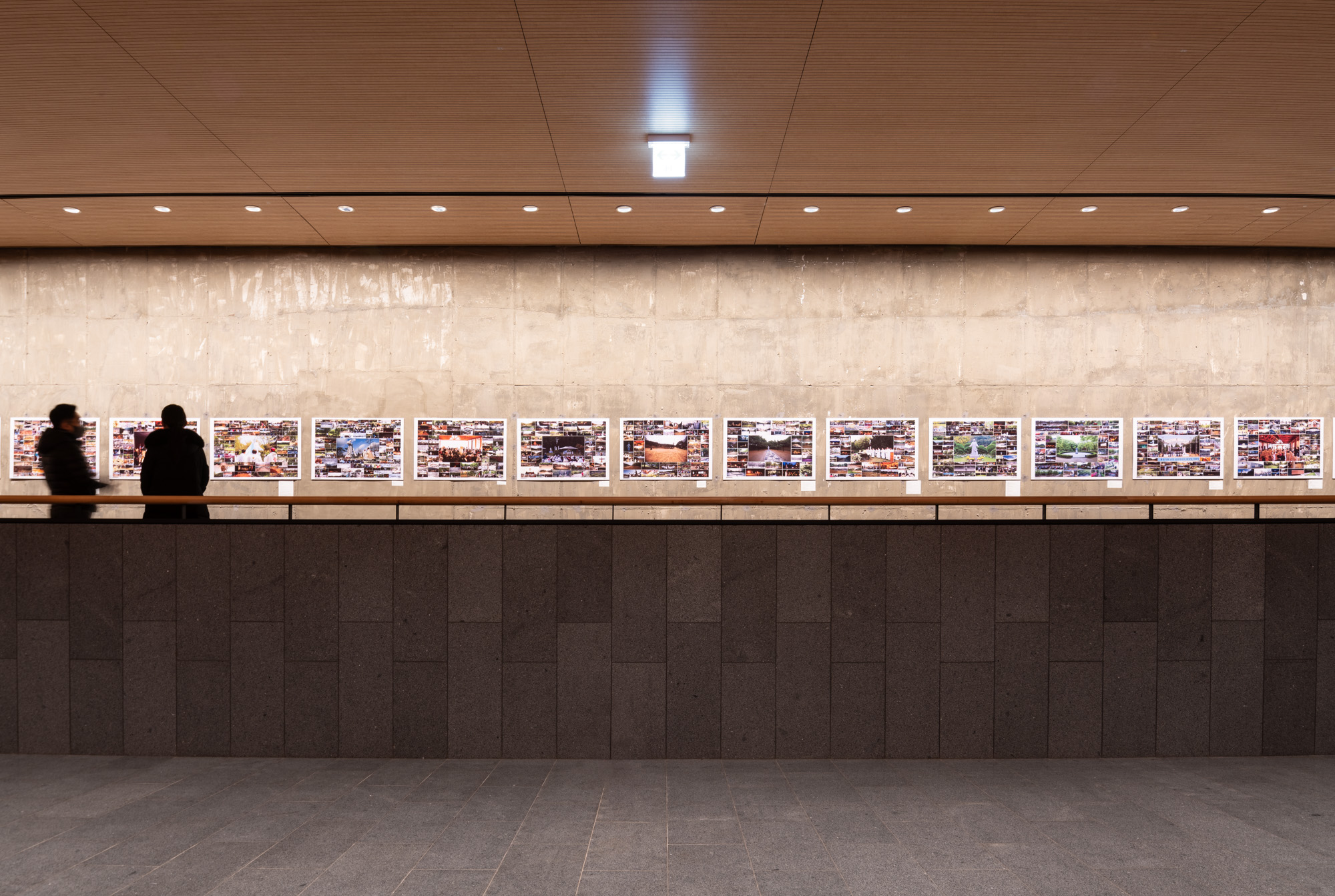
The play of light and shadows
As the visitors make their way to the main hall of the cathedral, they are greeted by a large space. The curved roof is made with maple wood louvres, with gaps of skylights in-between for natural light to shine in. The light change across different seasons and time of the day, creating a harmonious link between man and nature. The gap between the two towers also guides a beam of natural light into the space, attracting visitor’s attention to the main altar.
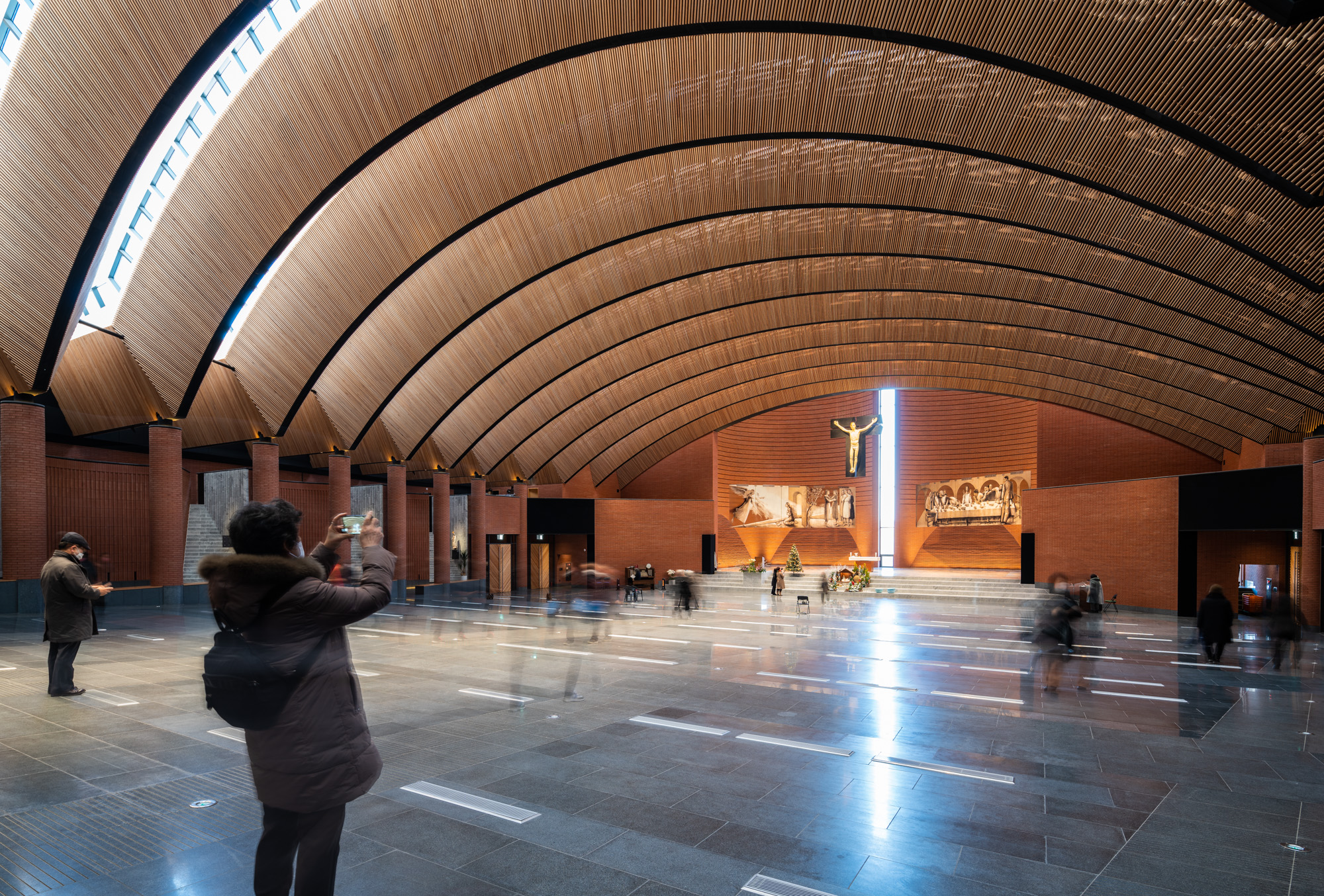
Visitors are led to the towers as the climb up the hill and enter the cathedral to the main hall. On a sunny day, light shines down to the altar through the skylight above the 41m high tower. Looking up the towers. the rectangular pattern of the skylight creates a brilliant play of light and shadow along the curved wall of the towers.

A mix of PARSCAN Spot and Narrow Spot was installed on the wooden louvres. The spotlights are aimed at the crucifix and the two large format artworks at the base of the towers, accenting them in the space and grabbing the attention of the visitors as they make their way inwards to the main altar.

Light is only used where it’s needed and where it’s seen. The Spherolit lighting technology in Parscan means we deliver a more precise and homogeneous light beams with minimal spill light. Despite the height of more than 10m, the light from PARSCAN was able to reach the two artworks efficiently and effectively, creating an even lighting with high visual comfort.
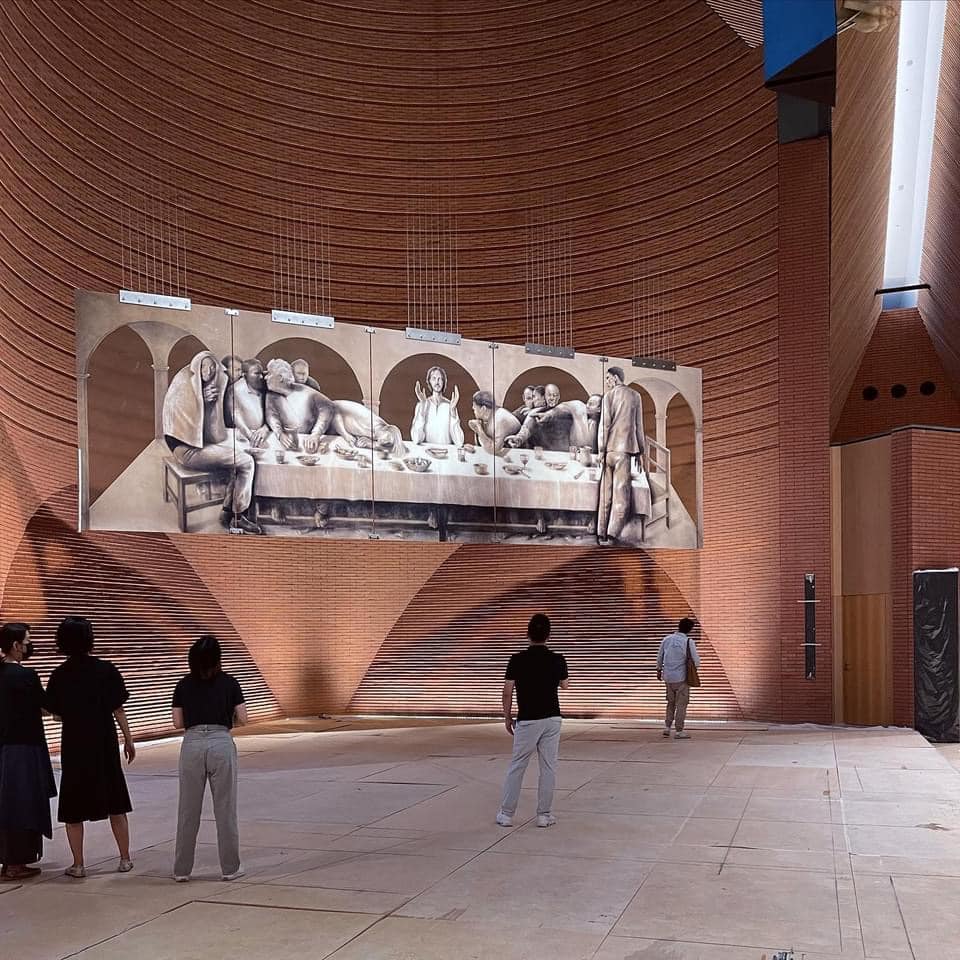
The change of light over time creates various expressions along with the movement of space, while making the night time scenery holy with artificial light. Biztro and partners have made great efforts for a long time to make the more human-like image of Jesus natural and awe-inspiring through the light. The transparent light shining through the eyes of Jesus presented at the end also symbolize the light of warm love with full of humanity that is looking at us living in the present.
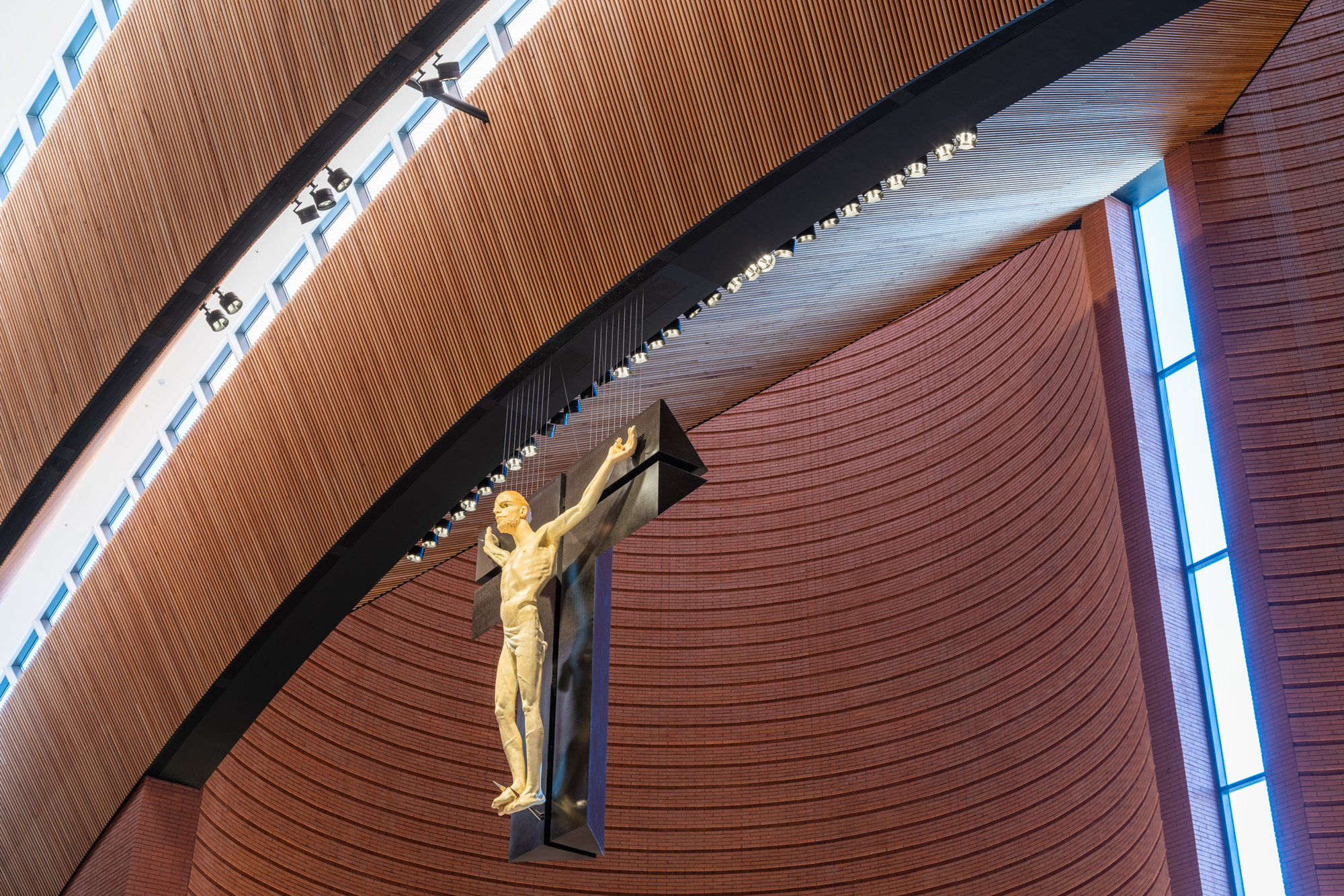
Sustainability
Other than providing a natural light source and acting as a landmark for the area, the towers also provides ventilation and maintain the indoor temperature. In addition, air tunnels buried underground on both sides will inject cool air in summer and warm outside air in winter. These air tunnels will help save about 40% of the heating and air-conditioning energy used in cathedrals. and minimise energy consumption by using an eco-friendly geothermal system.
The more light is emitted, the higher the current is needed and the temperature increases accordingly as well. Such high temperature overtime leads to rapid degradation of the LED modules, thus needing more replacements.
With ERCO’s in-house developed lighting technology, electronics and thermal managements, we manage provide high efficiency light (in lumens per watt) and reduce the amount of energy needed to reach such a height and distance. It also means that our luminaries are able to last longer, leading to increased cost-efficiency in the long run.
Find out more about the products used here: Lightscan | Quintessence | Parscan | Kona
- Products Used
- Quintessence Downlight LED 18W 3000K Wide flood
- Quintessence Lens wallwasher LED 16W 3000K
- Parscan LED 48W 3000K Spot
- Parscan LED 18W 3000K Narrow spot
- Lightscan Projector LED 42W 3000K Narrow spot
- Lightscan Floodlight LED 96W 3000K Oval flood
- Kona Lens wallwasher LED 48W 3000K
- Project Details
- Project: The Shrine of Our Lady of the Rosary of Namyang / Seoul, Korea
- Location: Namyang-eup, Hwaseong-si, Gyeonggi-do, Korea
- Architect: MARIO BOTTA ARCHITETTI + HnSa Architects & Designers
- Lighting Design: Bitzro & partners
- ERCO Partner: MICO
- Photographer: Efraín Méndez
Light for sacred buildings
The language of light is cross-cultural. But more than its use as a way of creating places to enjoy, light in any religion is a distinct symbol of the devine. Light in sacred places creates a contemplative atmosphere for religious meetings. Be it churches, mosques, temples or synagogues: accentuated light helps to direct the attention to essential things. ERCO illuminates historic places of worship and modern chapels using light to produce a separate, timeless language.
Mario Botta
Mario Botta is a world-renowned architect, winning multiple awards worldwide. Born in Mendrisio, Switzerland in 1943, he attended the Art College in Milan and studied at the University Institute of Architecture in Venice.
The Rosary Hill Cathedral is the largest cathedral he designed, and he has paid special attention and effort to the extent that he made 12 revisions during his five-year design period. The design process started from 2011, ending construction in 2020
Bitzro & partners
Bitzro partners is a leading lighting design firm in Korea, founded in 1998 by Kiyoung Ko. Specializing in architectural, landscape, interior lighting design, the firm completed over 1000 projects worldwide, working with both public and private partners to enhance the lighting environment.
Ko, Korea’s very first lighting designer to receive a master’s degree in the architectural lighting design from the prestigious Parsons School of Design, has been working with architect Mario Botta on the shrine of Our Lady of the rosary of Namyang for almost 5years.
무엇을 도와드릴까요?
프로젝트가 있으신가요? 저희가 도와드리겠습니다.
Return